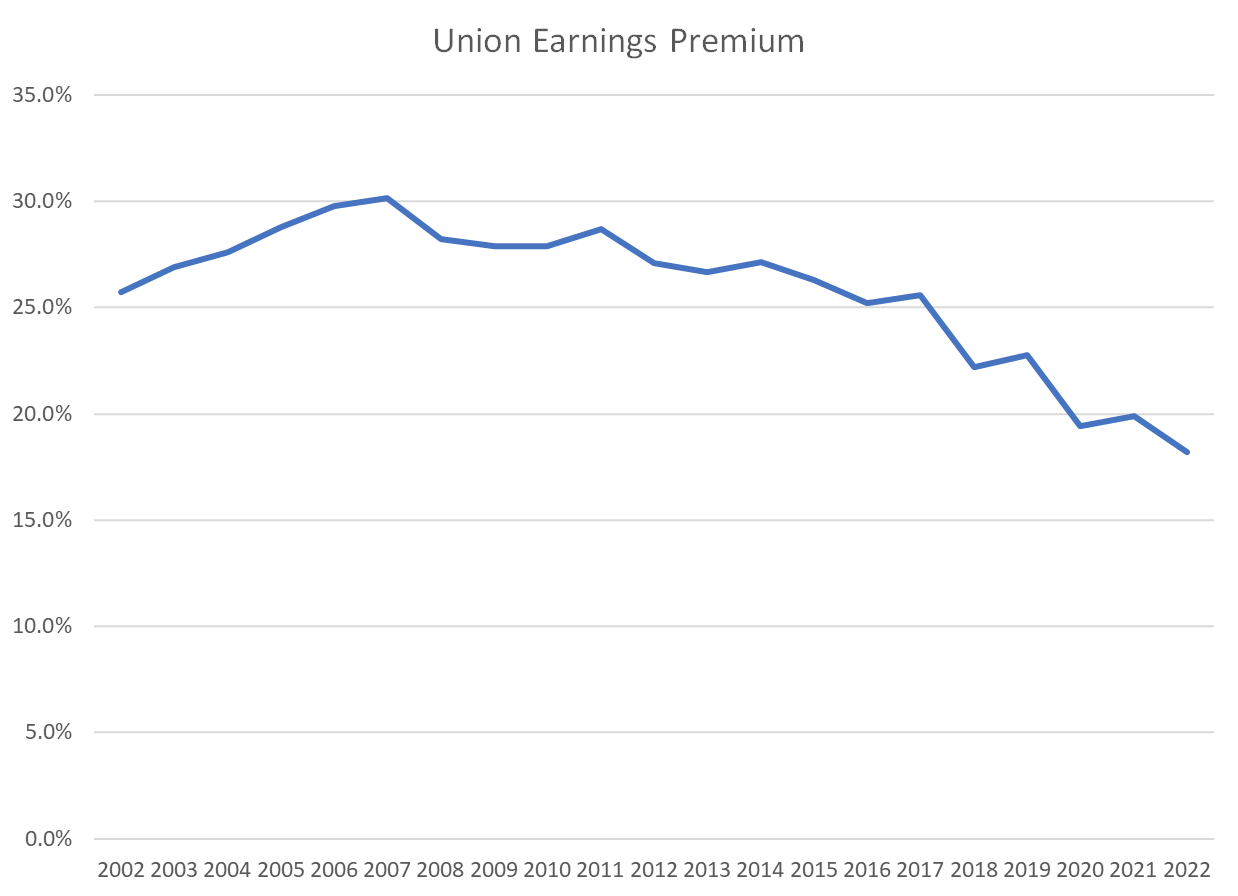The Daily Dish
January 24, 2023
The Unionization Rate Went, Uh, Down?
This White House is the self-declared most pro-union White House ever. It features a “White House Task Force on Worker Organizing and Empowerment” that is chaired by Vice President Kamala Harris and vice chaired by Secretary of Labor Marty Walsh. It enunciates its objectives as:
- Ensuring Workers Know Their Organizing and Bargaining Rights,
- Establishing a Resource Center on Unions and Collective Bargaining,
- Protecting Workers Who Organize from Illegal Retaliation,
- Shedding Light on Employers’ Use of Anti-union Consultants,
- Advancing Equity Across Underserved Communities by Supporting Worker, Organizing and Collective Bargaining, and
- Collecting and Reporting More Information on Unions’ Role in the U.S. Economy.
Readers can decide for themselves the desirability of these components and the mission overall. But under the “Collecting and Reporting” label one must include this: “The union membership rate – the percent of wage and salary workers who were members of Unions – was 10.1 percent in 2022, down from 10.3 percent in 2021, the U.S. Bureau of Labor Statistics reported today.”
That line is taken from a January 19 release by the Department of Labor regarding union membership in 2022. It is hardly a ringing endorsement of the task force. Union membership is concentrated in the public sector – the unionization rate is 33.1 percent – largely due to the high unionization (police, fire, teachers, etc.) in the local government sector. The release notes: “In 2022, 30 states and the District of Columbia had union membership rate below that of the U.S. average, 10.1 percent, while 19 states had rates above it and 1 state (New Hampshire) had the same rate” and “30 percent of the 14.3 million union members lived in just two states (California at 2.6 million and New York at 1.7 million).” Unions are now a government phenomenon concentrated in blue states.
Meanwhile, unionization in the private sector is 6.0 percent (down from 6.1 percent in 2021). Perhaps this is because median weekly earnings among union members rose $47 in 2002, compared to a rise of $54 among non-union workers. This is the latest year in a declining union earnings premium that reached as much as 30 percent in 2007 but was just over 18 percent in 2022 (see below).
Is it possible that people are migrating away from unions because they want a better raise?
Fact of the Day
Across all rulemakings this past week, agencies published $1.6 billion in total costs and added 1.6 million annual paperwork burden hours.











